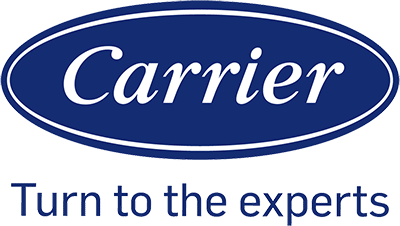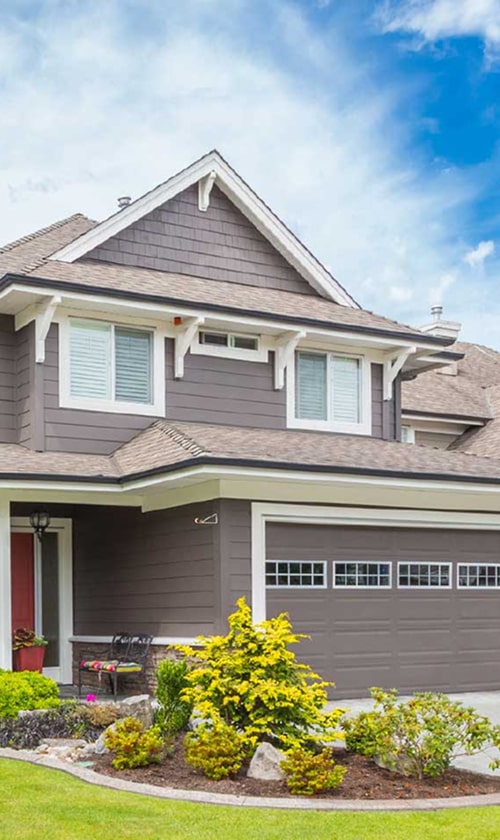The Critical Role of Proper Heat Pump Installation

When we install a heat pump, the steps we take can directly affect how long it lasts and how well it works. Working with trained professionals and following the right methods helps us avoid problems and keeps the system running smoothly.
Installation Quality and Its Effect on Lifespan
The quality of installation is a main factor in the life expectancy of heat pumps. If we follow manufacturer guidelines, our system lasts longer and avoids costly breakdowns.
Good installation quality keeps parts from wearing out early. It protects the compressor, assures correct refrigerant charge, and helps prevent leaks. When joints are sealed right, energy-efficient heat pumps run at their promised performance.
Even a small mistake in placement or setup can add stress to the unit. This can cut years off the average lifespan of a heat pump, which is usually 10 to 15 years with proper care.
The Importance of Professional HVAC Technicians
To get the most from our investment, we should have a professional HVAC technician handle the installation. Certified experts check things like:
- Correct unit sizing
- Ventilation needs
- Safe electric and refrigerant connections
- Proper installation according to local codes
Professional HVAC technicians follow industry best practices. They use the right tools, avoid shortcuts, and double-check their work. By doing this, they help us maximize heat pump lifespan and ensure reliable comfort. Hiring the right installer may cost more at first. However, good work lowers the risk of early repairs or the need for a new system before its time.
Common Installation Mistakes to Avoid
Some errors during installation are easy to miss but can be costly. Common mistakes include:
- Placing the outdoor unit too close to a wall or plant, blocking airflow
- Using the wrong amount of refrigerant, which stresses the compressor
- Skipping vacuum procedures, causing moisture and damage inside
- Ignoring manufacturer guidelines for wiring or piping
We need to make sure installers avoid these mistakes. A quick, careless job can lead to poor energy efficiency, noisy operation, higher utility bills, and a reduced lifespan of heat pumps. Taking the time to do things right is always worth it for long-term performance.
Extending Heat Pump Lifespan Through Optimal Maintenance

Proper maintenance keeps our heat pump running smoothly and extends its life by reducing wear and tear. Scheduling regular servicing, checking parts like filters, and managing refrigerant prevent costly problems and help us avoid unexpected breakdowns.
Establishing an Effective Maintenance Routine
We should create a maintenance schedule based on our system’s needs, age, and manufacturer’s guidelines. Routine tasks such as checking for leaks, inspecting wiring, and ensuring all parts are clean are important parts of basic upkeep.
It’s helpful to use a checklist so nothing gets missed. For example:
- Inspect outdoor unit for debris
- Check condensate drain for blockages
- Lubricate moving parts if needed
- Tighten electrical connections
Doing these tasks at least twice a year, in spring and fall, helps identify small issues before they become big and expensive repairs. If we stick to a regular system, we keep our heat pump efficient and reliable.
Professional Inspections and Servicing
Having a licensed technician perform an annual tune-up or professional maintenance is key. Technicians spot problems the average person might miss, such as electrical hazards or early signs of wear. During professional servicing, they test system controls, measure airflow, and confirm that all parts are working safely and efficiently. They also check the thermostat and safety features. Many HVAC companies offer maintenance plans that remind us when it’s time for service. These visits help our heat pump last longer and run at peak performance year-round.
Importance of Regularly Changing Air Filters
Dirty air filters restrict airflow. This makes the heat pump work harder and can cause it to overheat or break down earlier than expected. We should check our air filters at least once a month, especially during periods of heavy use. Most filters need to be replaced every one to three months, but some may need changing more often if we have pets or allergies.
| Task | Frequency |
|---|---|
| Check filter | Monthly |
| Replace filter | 1–3 months (typical) |
| More frequent replacement | Pets/Allergies |
A fresh filter helps our heat pump run efficiently and keeps indoor air cleaner for our families.
Managing Refrigerant Levels and Charge
Refrigerant plays a vital role in heat transfer within our HVAC system. Too much or too little refrigerant lowers performance and can harm the compressor. Only a qualified technician should check and adjust refrigerant levels. They have the tools to measure the charge accurately and look for leaks that can affect how well our unit works.
Signs of improper refrigerant include reduced heating or cooling, strange noises, or ice forming on the unit. If we notice these, calling a professional right away can prevent greater damage. Keeping refrigerant at the right level lets our heat pump run smoothly and last longer.
Optimizing Heat Pump Performance and Usage

Keeping our heat pump running well means paying attention to airflow, thermostat technology, and insulation. Simple steps like changing air filters, setting up smart controls, and checking ductwork help us get the most efficient operation and extend system life.
Ensuring Proper Airflow and Air Quality
We need to make sure our heat pump gets enough clean air. Reduced airflow, often caused by a clogged air filter, puts stress on the system and can lead to breakdowns. It’s important to check and change filters every 1-3 months. This keeps the air moving freely and improves air quality throughout our home.
Cleaning the air vents and making sure nothing is blocking them also matters. For homes with ductless mini-split systems, regular cleaning of indoor unit filters is just as important. Even with air source heat pumps, we should keep outdoor units free of debris, leaves, or dirt to maintain efficient operation.
If anyone in the house has allergies, we might consider higher quality filters. These help capture smaller particles and further improve indoor air quality.
Upgrading to Programmable or Smart Thermostats
Programmable thermostats and smart thermostats can help us control our heat pump more efficiently. These devices allow us to set schedules, so our system doesn’t run when we don’t need it. For example, we can lower heating or cooling when we’re away from home and have it return to normal before we arrive.
Smart thermostats add features like automatic adjustments, remote control from a phone app, and tracking of our energy use. This makes it easier to run the system at its most efficient settings. Setting a moderate temperature, instead of extreme shifts, protects our heat pump from overwork and can save on energy bills.
Many smart thermostats also give us reminders to change filters or perform regular maintenance, helping us avoid problems before they start.
Managing Insulation and Ductwork
Good insulation is key for keeping heat in during winter and out during summer. Without enough insulation in our walls, attic, and floors, our heat pump has to work harder. This leads to higher energy use and more wear on the system. We should also seal gaps around doors and windows to stop air leaks.
Proper ductwork is just as important if our home uses ducts. Leaky or poorly sealed ducts can waste a lot of heated or cooled air. We need to check for gaps or holes and seal them with appropriate materials. If ducts run through unheated spaces, adding insulation helps keep the air at the right temperature as it moves through the house.
For homes using a ductless mini-split, regular cleaning and checking for any signs of blockage or leaks will maintain peak performance. A well-insulated and well-managed system keeps our home comfortable and our heat pump working efficiently.
Identifying Factors That Impact Heat Pump Longevity
Several key factors can affect how long our heat pump operates efficiently. By understanding these, we can make better choices and maintain our system more effectively for both heating and cooling.
Climate and Environmental Conditions
Our local climate and the specific environmental conditions around our home play a big role in heat pump performance. In areas with mild temperatures, heat pumps usually last longer. However, they may wear out faster where temperatures often drop below freezing or rise above 95°F.
Environmental factors like salty air near the coast, high humidity, and dust can damage key parts. Salt air can corrode coils and metal parts. High levels of dust or pollen can clog filters and reduce airflow, stressing the system.
Trees, shrubs, or structures too close to the outdoor unit can trap heat or restrict circulation. It’s best to keep at least 18-24 inches of clear space around it. Shading the unit without blocking airflow can help it work more efficiently, but blocking it can cause problems.
We also need to watch for standing water or deep snow, both of which can harm the compressor. Elevating the outdoor unit on a sturdy pad can often prevent water damage.
Usage Patterns and Mechanical Stress
How often we run the heat pump, and how hard we push it during extreme weather, affects mechanical stress and lifespan. Systems used year-round for both heating and cooling usually experience more wear than those used only for one season.
Heavy workloads during heatwaves or cold snaps can overload parts. Frequent switching between heating and cooling modes, or setting very large temperature swings, can stress compressors and fans. It helps to set steady, moderate thermostat settings.
We should check for signs of short cycling a pattern where the system turns on and off often. This leads to faster wear and uses more energy. Possible causes include the wrong-size system, dirty filters, or thermostat problems.
Regular filter changes and protecting the unit from debris help prevent unnecessary stress and keep it working longer. Properly installed smart thermostats can help avoid frequent cycling by maintaining even temperature settings.
Recognizing When Repair or Replacement Is Needed
Knowing when our heat pump needs repair and when it’s time to think about a replacement can save us money and help us avoid unexpected breakdowns. Looking at signs of frequent repairs, rising energy bills, and lower system performance helps us make the right choice for our home comfort.
Signs of Frequent Repairs and Declining Performance
If our heat pump needs repair more often than usual, this usually points to bigger issues. A unit that breaks down two or more times each season can signal the end of its reliable service. We should also pay attention to changes in heating or cooling output. Rooms may feel less comfortable, and temperature may be uneven. Loud noises, longer run times, or short cycling show that the system is under stress.
Our energy bills give another clue. If energy consumption rises sharply, even after basic maintenance, efficiency has dropped. A failing heat pump may take longer to heat or cool, which wastes power and wears out parts faster.
Some common warning signs include:
- Frequent need for priority service
- Sudden spikes in utility costs
- Frequent breakdowns in colder or hotter months
When we see a pattern like this, it’s usually time for a closer inspection.
Heat Pump Replacement and Upgrade Considerations
A heat pump’s lifespan is often around 10 to 15 years. If our system is nearing or past this range, replacement might be the wiser choice over recurring repairs.
We should look at Seasonal Energy Efficiency Ratio (SEER) and Heating Seasonal Performance Factor (HSPF) ratings. Newer models often have better ratings than older systems, which can lower our energy bills and improve comfort.
If our heat pump uses an old refrigerant, finding replacement parts or refrigerant may be tough or expensive. This can make heat pump replacement more reasonable. Upgrading can also mean better compatibility with our furnace or air conditioner, if we use one as a backup.
Key considerations include:
| Factors to Review | Repair | Replacement |
|---|---|---|
| Age of system | <10 years | >10-15 years |
| Cost of repairs | Low, rare | High, often |
| Efficiency | Still good | Getting poor |
| Comfort | No issues | Inconsistent |
If costs add up or if comfort falls, we should discuss our options with a licensed technician.




